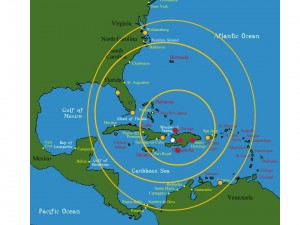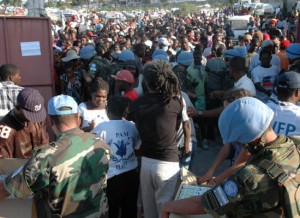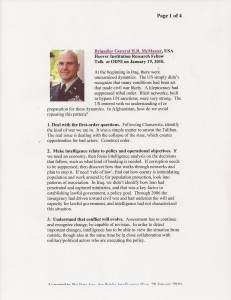
TPFID (Time-Phased Force and Deployment Data)
Reverse TPFID Sequence of Events:
CAB 21 Sequence of Events as Previously Provided
Embrace the Cubans as full partners
Multinational Decision Support Center (MDSC) in Tampa or Quantico
Grid the Island, Assign Zone Masters with Commercial Satellite Communications to Each Grid Square
Execute Bottom-Up Needs-Driven Information-Driven Relief Effort as well as Med-Evac Priority
Emphasize AIR DROPS not WHEELS, and C-13os using See Bee rough strips created overnight
Assume all local water contaminated by bodies and sewage until demonstrated otherwise
Hospital Ship Should Have Been Turned Around Instantly, Refueled and Resupplied at Sea
Send at least one and ideally two Amphibious Ships will full complements of helos augmented as they pass Camp Lejeune coming down from Little Creek–ideally plan to use Landing Craft not just the helos
Pre-Approved Emergency Flights ONLY into Port a Prince and Santo Domingo (including See Bees and their construction equipment, Army engineers and bridges
Create at least two Foreward Area Refueling Points (FARP), one for conventional aircraft, one for helicopters, and add a third for free fuel for all ground vehicles including indigenous and NGO vehicles
Triage all relief aircraft via MDSC, ideally triage the loads BEFORE they are loaded–push the information perimeter all the way out to every government and NGO planning to arrive, run BIG AIR into McDill, Guantanamo, Havana, Bermuda, Miami, triage loads into C-130, Air Drop, and Helo Delivery. Remember that onward transport is the next log-jam, see USMC Lessons Learned from Bangladesh–precision drops across the country are better than jamming everything into an airport without onward delivery options.
Re-Visit the 450-Ship Navy proposed in 1998 and again in 2008
Why is it we are not seeing Army Civil Affairs Brigade in charge of this? Frock the ranking Colonel to one-star (pull him out of AF for this), put the Total Force behind CAB, and tell the existing conventional leadership they are in direct support of CAB.
Haiti is an Epoch B information challenge that cannot be addressed properly by Epoch A “materials” leadership.
See also: Journal: Haiti Rolling Update







 InSTEDD's mission is to harness the power of technology to improve collaboration for global health and humanitarian action. We are an innovation lab for tools designed to strengthen networks, build community resilience and improve early detection and response to major health-related events and natural or human-caused disasters. We grapple daily with the challenges of finding new approaches and new designs: a simple, reliable way to bring it all together — the people, the tools and the data — and create the kinds of information
InSTEDD's mission is to harness the power of technology to improve collaboration for global health and humanitarian action. We are an innovation lab for tools designed to strengthen networks, build community resilience and improve early detection and response to major health-related events and natural or human-caused disasters. We grapple daily with the challenges of finding new approaches and new designs: a simple, reliable way to bring it all together — the people, the tools and the data — and create the kinds of information  flow that we know will save lives. We think that with new, free and open-source technologies we can help humanitarian and public health organizations around the world work together more effectively in crises. We aim to reduce mortality, accelerate recovery and help prepare communities to face the unexpected with confidence in their own resilience.
flow that we know will save lives. We think that with new, free and open-source technologies we can help humanitarian and public health organizations around the world work together more effectively in crises. We aim to reduce mortality, accelerate recovery and help prepare communities to face the unexpected with confidence in their own resilience.